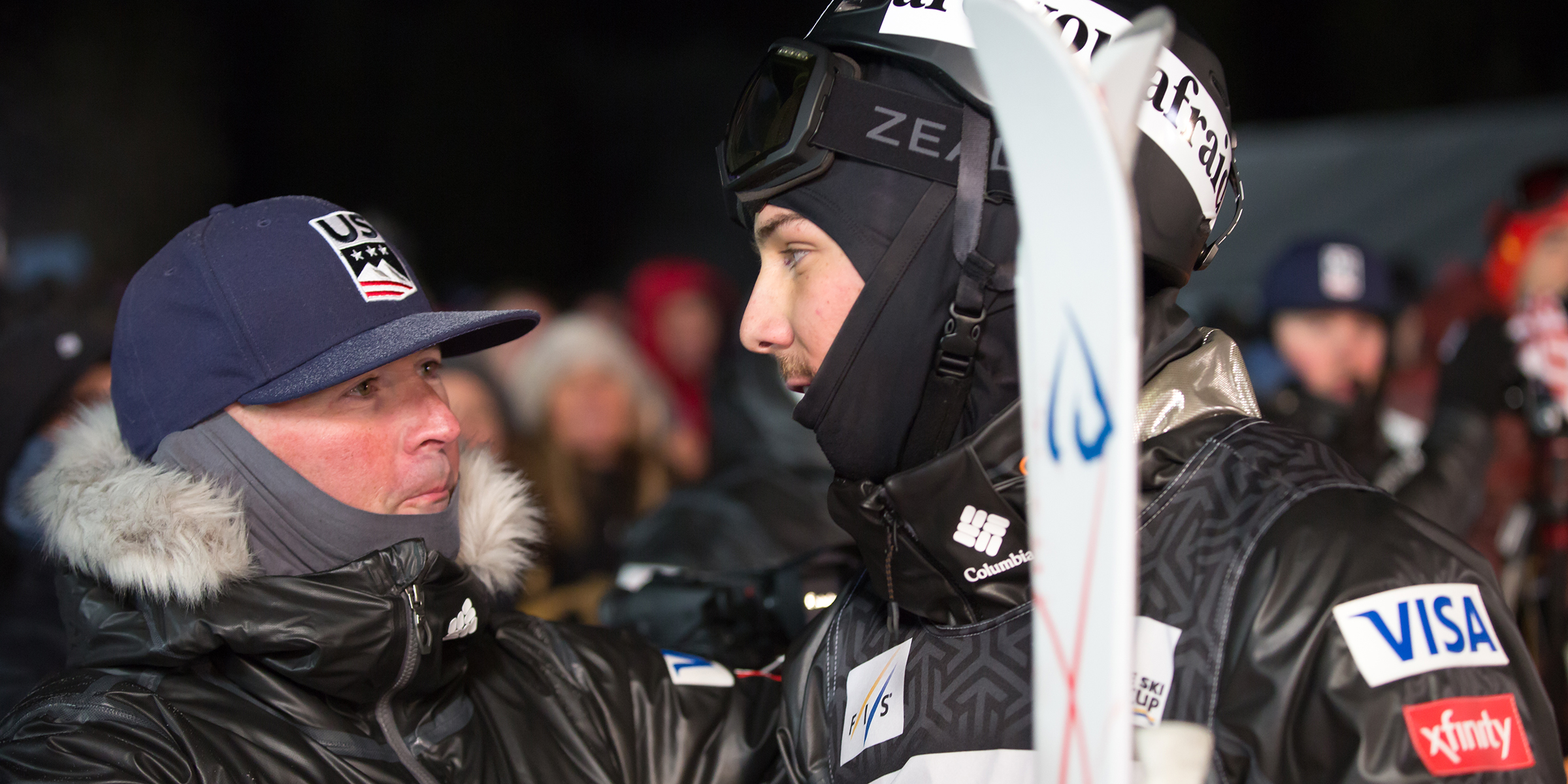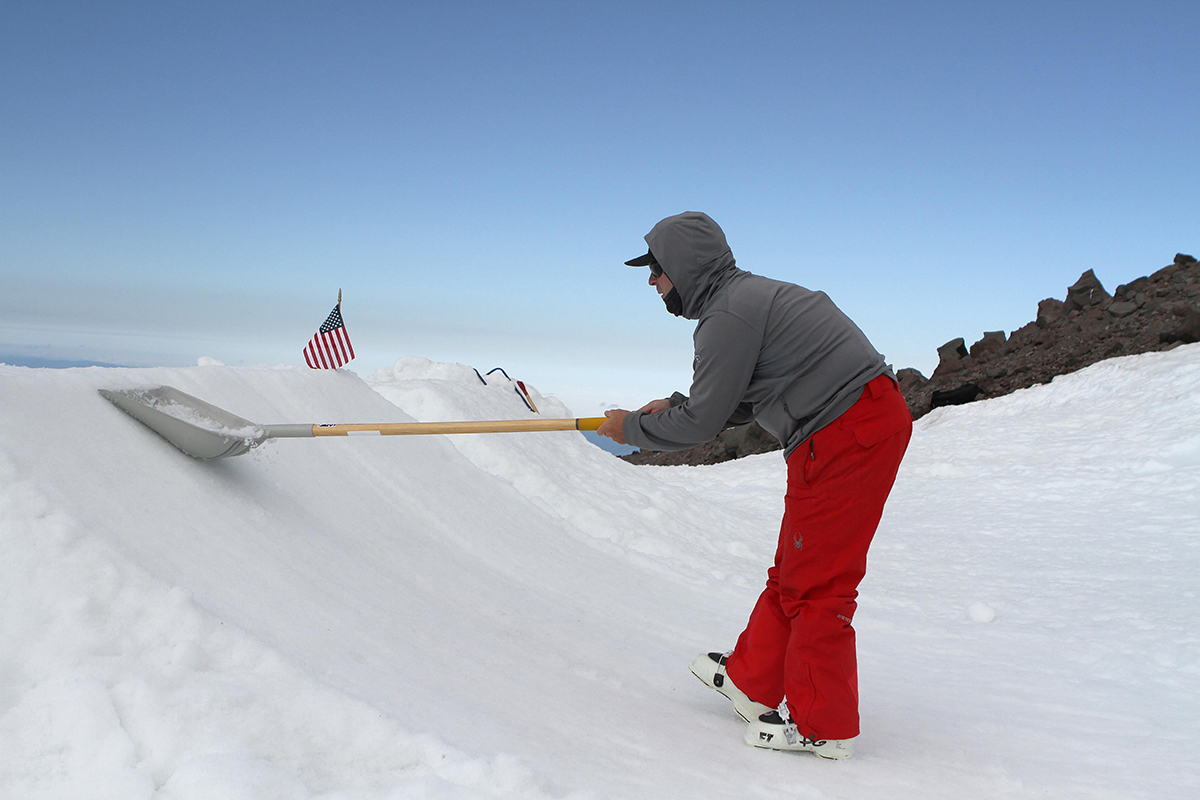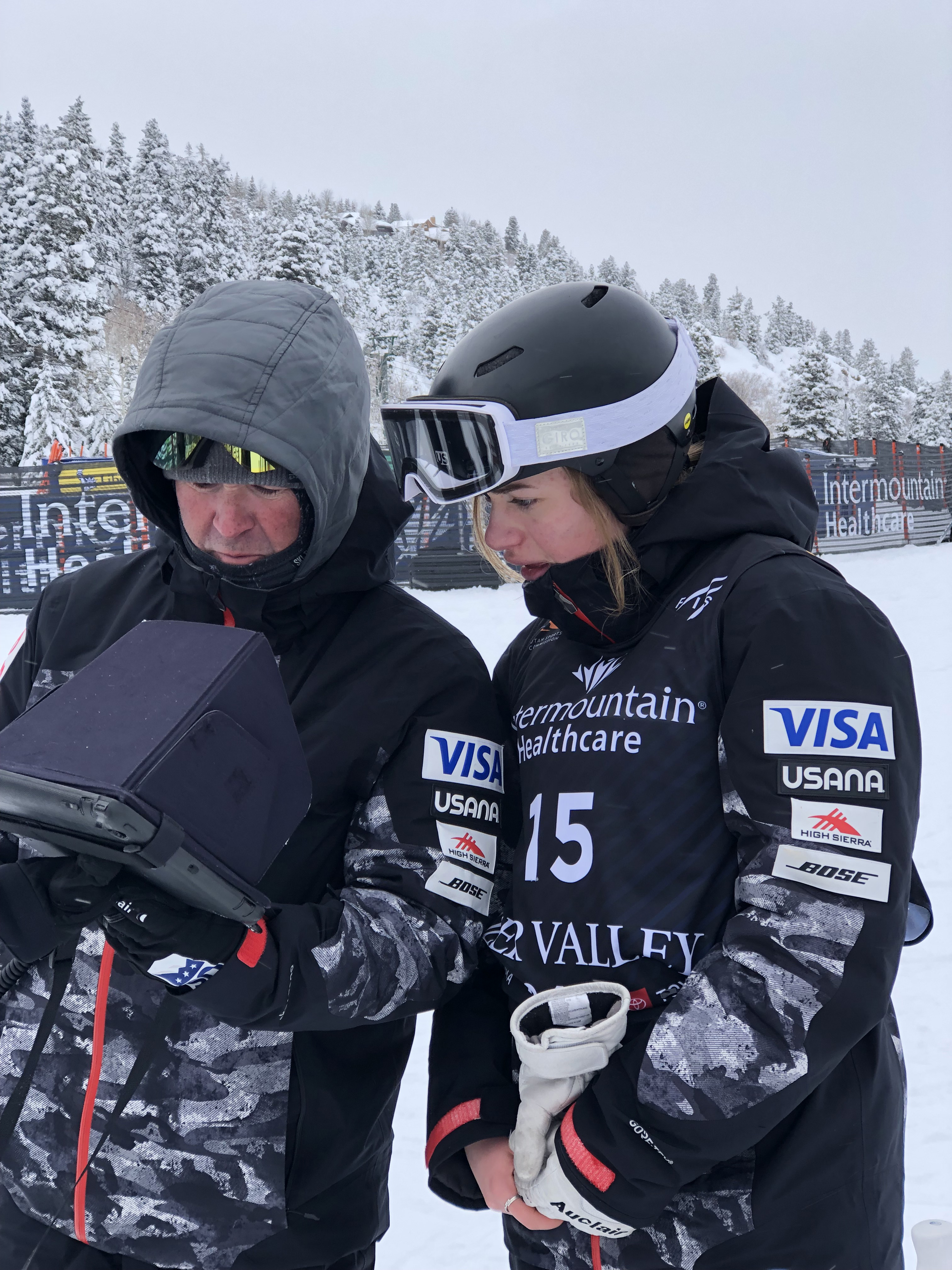Coach's Column: What is Moguls’ Launch Angle?

A childhood Christmas present turned Head Moguls Coach Matt Gnoza into a lifelong skier, and the sport soon became a family tradition. Matt remembers always looking for the “next level of skiing,” which is how he got into crushing bumps. After 21 years with Killington Mountain School, where Matt served in various capacities, including Development Program Director - that’s right he even had oversight over the alpine development programs, a big deal for a freestyle coach - Matt joined U.S. Ski & Snowboard following the 2014 Olympic Winter Games. A sense of curiosity fuels Matt’s coaching philosophy, and as someone who has raised two accomplished freeskiing sons, he understands the importance of looking beyond his discipline to dig deep into what good coaching, ski related or not, is all about. In this next installment of our “Coach’s Column,” Matt shares what he and his staff are up to in disrupting the “norm” in elite moguls skiing.
We’re bringing you stories from the ground through the lens of our coaching staff who know our athletes best. These staff members spend countless hours traveling from point A to point B in the winter with athletes, eating dinner as a team, training in the gym and on the mountain, often celebrating Thanksgiving away from home and instead with their athletes and fellow staff members, and the list goes on. They’re more than a team…they’re a second family – a winter family. It’s not easy to be away from home. The days are long and the load is heavy, and it’s sometimes thankless work for these behind-the-scenes heroes. We hope that by sharing their stories, in their words, it will give you all some understanding and appreciation for what it takes to create an environment in which our athletes can thrive.
Enjoy the journey,
Lara Carlton
Freestyle Communications Manager
------------------
At the end of last season my staff and I reflected and asked ourselves, “What can we do differently?” Every moguls team in the world is going about things the same way.
There aren’t many variabilities you can build into a moguls run: it has to be a series of turns and jumps. But there is variability you can build into how you teach moguls skiing. We realized we’ve been teaching the same way that everyone is teaching, talking about “bending our knees” or “adjusting our hands,” different things like that. But when we stepped outside what I like to call the “moguls box,” and did some digging, we found this concept of external cueing - when the athlete focuses on the outcome of his or her movement.
What we’re working on is finding different ways to realize what we say really matters. We want to use words that carry specific information that illicit a certain physical movement. That’s our goal. For example, taking off on a jump. We used to talk about “pressing off of your toes” and “extending your knees” and “lifting with your arms.” And now, rather than “pressing with our toes,” we’re “pushing through the jump, we’re extending to the sky.” We’ve taken these internal cues and turned them into external cues in a way to give the athletes something to work on. We’re trying to really get the athletes to go “oh that’s what that’s going to feel like.”
Change doesn’t happen overnight - especially in a sport that’s become so entrenched in tradition. I’ve been coaching moguls skiing for going on 28 years now. We still ski on pretty narrow skis and we still go through the moguls and perform jumps. Albeit the speeds are faster, the technique is cleaner, the jumps are more difficult than they were. But the sport on the whole hasn’t changed that much, so what you have to do is not be afraid to try new things so that we can then advance the sport.

I relate it a lot to baseball. Just recently there’s been a lot of talk about all of the hitters hitting high-fly balls and this thing called “launch angle”. They’re seeing a dramatic change in how many home runs are being hit around the league because everyone is focused on the launch angle of the ball when it comes off of the bat. So, I asked our staff, “What is moguls’ launch angle?” What can we find in our sport to make our athletes hit a homerun every time they’re at the top of the course? We’re finding that in this external cuing the athletes are starting to think about their skiing a little bit differently and thinking about ways in which they can make that adjustment other than just hitting a little ground ball and hoping that it does all right.
In moguls there has always been this focus of perfecting your next trick before you climb the ladder to the next one. As a staff we’re working on making sure we’re not sweating the small stuff through the variation training we’ve implemented and combined this with external cueing. We need to focus on making sure it works and is going to get scored. We’re not going to focus on “oh that back tuck was good, but the feet could have been just a tiny bit tighter.” Were they tight enough to get a good, high score? Yes. Then we’re good.
The current team has really bought into the randomized training approach. During camps they’re not just hiking or lapping and going up to do the same backflip over and over again all day. They’re going from a backflip to a back full to a cork 7 back to a backflip back to a cork 10 or, oh let’s add a grab on a backflip. The athletes are feeling really good and successful when all of a sudden, they just did six different jumps and stomped the landing on all of them.
Maybe you’re thinking, “Okay Matt I get it, you’re totally attempting to revolutionize the moguls world one external cue at a time. But how do you measure the success of this?” Glad you asked. From training we are starting to see desired results, so that tells me we’re achieving the skills we’re after. And then hopefully through these successfully developing these skills we’re going to see the results when competition day comes around. This team is fired up and hungry to build off of the momentum from last season.

Once you stop learning, you die. We’re not winning every week yet so there’s got to be something else out there that can help make us that much better. My approach to coaching has always been an openness and a willingness to learn from others. And I think I have a pretty good filter where I can take information from multiple places and say, “this piece of information was really solid I am going to put into my coaching and maybe that piece I’m going to let go.” Plus, after 28 years it just gets boring to say the same thing over and over.
This process has been fun and rewarding and it aligns with our coach statements we created as an organization through the USOPC’s Appollo Project. It’s been a fun process to think differently about the turn; about the jump. It’s different, but it’s the same. We’re still trying to get athletes to jump as high as they can and perform clean tricks. We’re still trying to get them to absorb over the top of the mogul, or edge of the ski, or have good pressure in the boots - but now we’re saying it differently. That part’s been neat to me because I kind of feel like I’m teaching a new thing, even though I’m not.